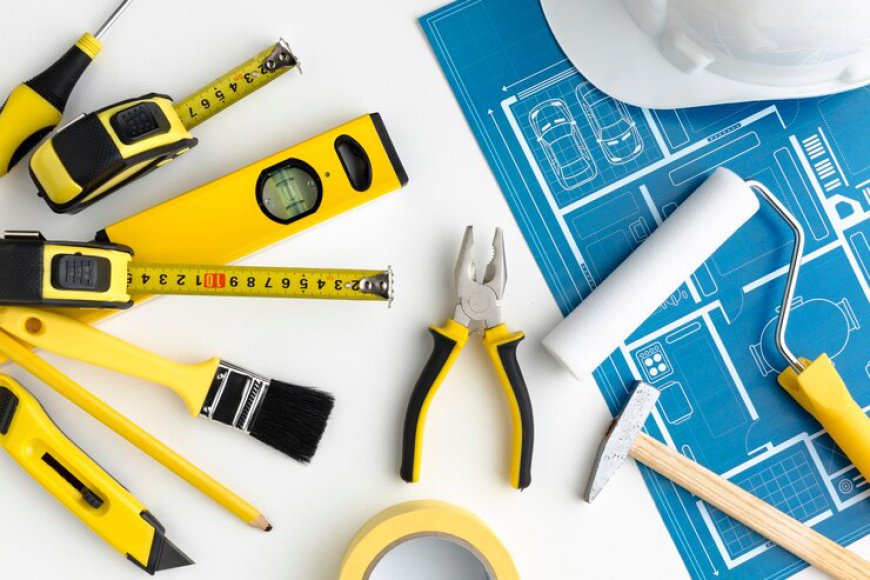How to Calibrate and Maintain Your Measuring Instruments

Measuring instruments are important for obtaining correct facts in numerous fields. However, even the most pleasant contraptions can end up being less accurate over time. This can result in errors, compromises of high quality, and high-priced mistakes. Calibration and maintenance are crucial to ensuring the accuracy of measurements. They act as safeguards for maintaining the integrity of measurements.
In this article, we embark on an adventure through the intricacies of calibrating and maintaining measuring instruments. From the meticulous calibration system, wherein gadgets are aligned with recognized requirements, to the diligent maintenance exercises that maintain their accuracy and sturdiness, we explore the vital steps and exceptional practices required to uphold the integrity of measurements.
Join us as we get to the bottom of the secrets behind accomplishing and sustaining precision in dimension, empowering individuals and corporations alike to consider reliability in their facts and the greatness of their endeavors.
Why calibration matters:
Imagine looking to bake a cake without understanding the exact measurements of your ingredients. A tablespoon should turn out to be a teaspoon, and suddenly your masterpiece becomes a catastrophe. Similarly, in scientific studies or industrial settings, even the slightest deviation in dimension accuracy can lead to high-priced errors or compromised consequences. Calibration is the process of evaluating the measurements of a device against a recognized trend to determine its accuracy. It ensures that your equipment provides reliable and steady outcomes, allowing you to agree with the records they produce.
The Calibration Process:
Calibration involves several steps to ensure that your measuring tools are running within suitable limits of accuracy. Here's a breakdown of the typical calibration process:
1. Selection of standards:
The first step is to pick out suitable calibration standards or references. These standards ought to have a recognized and traceable accuracy that exceeds the required accuracy of your instrument.
2. Pre-calibration Checks:
Before calibration, carry out visual inspections and functional tests of your device to pick out any harm or issues that could have an effect on its accuracy. Ensure that the tool is free and unfastened from particles that might intrude on its overall performance.
3. Calibration Procedure:
Follow the manufacturer's suggestions or well-known operating processes to perform the calibration. This often entails adjusting the device to match the readings of the calibration. Keep detailed statistics of the calibration method, which include the date, technician's call, and results obtained.
4. Adjustment and Verification:
If the tool's readings deviate from the calibration preferred, adjustments can be necessary to bring it back into alignment. After changes, confirm the instrument's accuracy by performing extra calibration checks.
5. Documentation:
Document the calibration results, such as any modifications made, and affix a calibration label indicating the date of calibration and the following due date for recalibration. This documentation is essential for quality performance and regulatory compliance.
Tips for Maintaining Accuracy:
In addition to ordinary calibration, the right maintenance is essential for preserving the accuracy and durability of your measuring devices. Here are some guidelines for keeping your devices:
1. Regular Cleaning:
Make certain to often clean your units to prevent dirt, dust, and debris from building up and affecting their overall performance. Use the cleansing solutions and strategies endorsed by the producer for exact results.
2. Storage:
Store your tools in a clean, dry environment away from severe temperatures, humidity, and corrosive materials. Use shielding instances or covers to prevent harm in the course of garage or transportation.
3. Handling:
To preserve your devices in excellent circumstances, take care of them carefully to avoid damage to delicate additives or calibration. Make sure to comply with the management methods described in the tool's user manual.
4. Calibration Schedule:
Establish a regular calibration schedule based totally on the manufacturer's recommendations, usage frequency, and industry standards. Adhere to this timetable diligently to make certain that your instruments continue to be correct and compliant.
5. Training and Education:
Provide training to personnel responsible for operating and maintaining the instruments. Ensure that they recognize the importance of calibration and proper upkeep practices to maximize the accuracy and reliability of measurements.
Conclusion:
In the pursuit of precision, calibration, and upkeep, the bedrock upon which dependable measurements are constructed. Through meticulous attention to elements and adherence to pleasant practices, individuals and businesses can ensure the accuracy and consistency of their measuring units. By embracing calibration as a routine process and prioritizing maintenance as a proactive undertaking, the integrity of data and the pleasantness of effects continue to be safeguarded.
As we conclude our exploration into the arena of measuring tool calibration and protection, let us not forget that precision isn't always merely an aspiration but a continuous commitment. By nurturing a culture of diligence and duty, we empower ourselves to navigate the complexities of dimension with confidence and clarity, thereby advancing progress, innovation, and excellence in each undertaking.
